Artistic Lapidary Endeavors
To Southeastern Maine and back a “Rockhound’s Journey”
By Bryce H. Easter and Janet M. Easter
Bryce Easter is a local lapidary living in Fort Fairfield, Maine. Together, with his partner Janet, the two explore our local landscape searching for minerals and semi-precious gems to cut, polish and turn into lovely display pieces or jewelry.
There is currently a display of some of their work at the Fort Fairfield Public Library. There are many beautiful gems and minerals to be found in our landscape!
Starting with the Journey
How does one begin to plan for the adventure of finding lapidary worthy rocks in collectible places?
Well now, after talking it over with my lapidary partner, Janet, we chose to explore Southeastern Maine, and then looked up localities which offered the best prospects for collecting rocks that are especially interesting to us. In particular, the towns of Machias, Lubec and Perry looked very promising.
Machias:
We chose Machias and the Machias Inn and Motel as our first stop because we read of a locality in the area that is called “Jasper Beach”. The beach offers up Jaspers in rolled pebbles, Brecciated, Ribbons, Orbiculars and an occasional Bloodstone which is rare. Jasper Beach is particularly noted for a specific type of jasper that I was interested in called “Orbicular Jasper”. This fine material, when cut and polished, would reveal intricate light cream and orange to umber colored circular patterns against a dark background. Orbicular Jasper is a prized material for lapidaries to work with.
On the way to Lubec, we decided to make a side trip through part of the Acadian National Park going toward Winter Harbor, which currently includes a converted Naval Communications base that serves as an Ecology/Wildlife study center. The shoreline drive reveals pink granite outcrops lined with pine trees. No collecting of mineral specimens or any type of rock is allowed in the Acadia National Park. There are hefty fines if caught doing so. However before entering the park and after exiting the park I stopped to pick up a few samples of the red granite.
Also on the way to Lubec, we took a scenic route that revealed small, picturesque lobstering towns with protected bay inlets and the Naval Very Low Frequency Communications antenna array, used to communicate with the United States Naval Submarines while they are at sea
Lubec:
Arriving in Lubec, we immediately checked into our motel to store our stuff and went down to the town center for lunch, and to check out the town for possible rock collecting locations. Interesting material that can be found in the Lubec area is; Lodestone, chalcopyrite, Limestone Pyrite, Galena and also some loose galena drift on the beach. Fossils may be found also, but I never saw any during our tour of Lubec.
A Point of interest:
Franklin D. Roosevelt (President of the United States during the Late thirties and well into World War II) had a home on an island just off the shores of Lubec. It was actually an island located in Canada and is connected to the main shore via a bridge. Believe it or not, a Can/Am customs check point is at the bridge and anybody wanting to visit the site must pass through this checkpoint. Roosevelt was often seen walking the main street of the town and stopping to talk to the people there in a nonchalant manner.
Perry:
It’s a long round-about-drive from Lubec to Perry taking 1 ½ to 2 hours but it is really worth the trip if a rock collector is interested in “Agates”.
There was one agate beach we were aiming for that was private and permission had to be given to walk to the beach. It was a Sunday and the owner was not available. However, Janet and I had a secondary destination called “Gleason Cove”. Gleason Cove has a public boat launch and is quite accessible. When we arrived the tide was going out revealing beach stones that were still wet and thus rather colorful. As we combed the beach, I immediately found a beautiful red banded and speckled agate. I could hardly contain my excitement about the find. Agates were laying all over the beach between the high water and low water tide zone (insert description). It was a rock picking delight.
I quite recently read that in Perry, along the shores and ledges of the beach area, are Geodes that have fairly large amethyst crystals. Next time I go back to Perry that will be my quest.
Home again:
Arriving back home, I began the job of separating the agates and jaspers into their individual bins grading them as we went. The stones that showed the most promise as cutting material were the ones with the least number of fractures and the greatest color and pattern. Agates can reveal a great variety of color variations and patterns but what makes the material especially desirable is the hardness of the material. This characteristic makes for a very good shine on a finished piece. Lapidaries are known to have a piles of stones discarded during the sorting process as only one or two might be good enough to bring to a final polish after each collecting expedition.
Cutting and Polishing Agates and Jaspers:
Agates are a “Chalcedony”, a microcrystalline variety of quartz (silicone dioxide- SiO2)
Hardness on the Mno’s scale, of 10 , would be 7. Jaspers are also a “Chalcedony”. A microcrystalline variety of quartz (Silicone dioxide- SiO2) Hardness on the Mhos’ scale is 7. And as stated, hardness of 7 is a pretty good indication that these stones will take a pretty nice mirror shined polish.
From creating the initial stone slabs, to cutting the rock slices into shapes and then the doming of the cabochons is a process that takes time and patience. It is also a process of discovery where you see what looks like a fairly unassuming rock turn into a fascinating example of nature’s hidden beauty come to light. And the best part for the Lapidary is that he or she is the artist in this transformation.
I truly enjoy the entire journey, from locating a great piece of stone to putting on the final polish at my bench in my in-house shop, “Easter Lapidary”. And Janet can now take the complete cabochon and perform a little beading magic that turns the stones into one of a kind pendant necklaces. You can see examples at her online shop, Oestara Stones.
A showing of the cut and polished cabochon stones, and what can be done with them, can be viewed at the Fort Fairfield Library where a display cabinet will be located at the checkout desk.
References:
Cunningham’s Encyclopedia of “Crystal, Gem & Metal Magic. By Scott Cunningham.
Dictionary of Geological Terms- third edition. Prepared by the American Geological Institute.
Maines Geological Survey, Internet Page guide for collectors. http://www.maine.gov/doc/nrimc/mgs/explore/minerals/guide/guide.htm
http://www.maine.gov/doc/nrimc/mgs/explore/minerals/
Maine Mines and Minerals Vol.2 (Eastern Maine) by Philip Morrill and Wm. P. Hinckley
(Towns, with localities are all in alphabetical order and easy to find)
National Audubon Society “Field Guide to North American Rocks and Minerals”
Roadside Geology of Maine. By D.W. Caldwell (found in the Fort Fairfield Library)
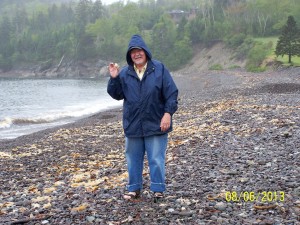
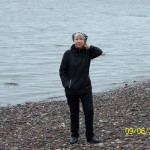
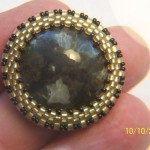
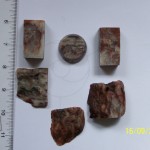
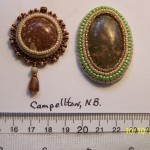
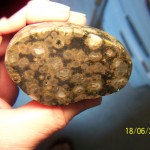

Just read that article “Artistic Lapidary Endeavors” and was totally surprised.
Those people sure do know their stuff! 🙂
I am looking forward to reading more of their articles/stories. 🙂
Have a Great Day.
BE…Good!!! 🙂